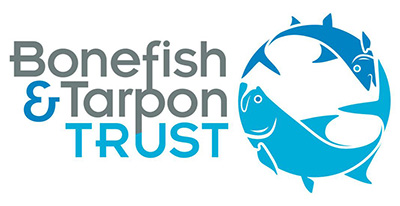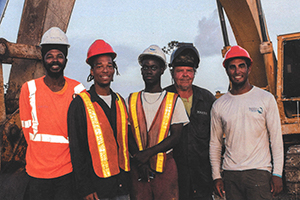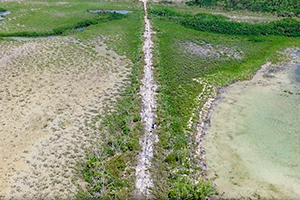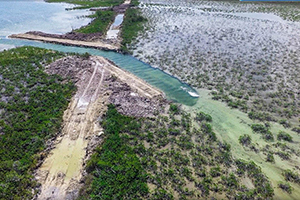SUCCESS STORY
August Creek Restoration
Previous to the 1950’s August Creek, located on the East End of Grand Bahama, contained a vibrant biodiverse ecosystem which included pine trees that thrived in the limestone strata of August Cay. Logging companies were attracted to the area by the robust pine tree forest which prompted them to build a 600 yard causeway to facilitate the passage of logging trucks to harvest the trees. This causeway blocked the flow of water between August Creek and the surrounding flats which left the flats lacking in clean, moving water. Even after 60 years of tide flows being blocked by the causeway, the August Creek area still showed signs of a productive fishery. Clean sand and mangrove trees were plentiful, only the flowing water was missing.

Working to conserve and restore bonefish, tarpon and permit fisheries and habitats through research, stewardship, education and advocacy.


Project Goals
Collaborating with Bahamas National Trust and the local community in East Grand Bahama, the Bonefish and Tarpon Trusts goal for this project is to reconnect the fragmented mangrove creek systems to restore both tidal flow and fish passage allowing access to additional healthy habitat for bonefish and other flats-oriented species.
Strategies & Results
The plan to reopen the creek entailed cutting three strategic passes through the old logging road. Conservationists identified where to make the cuts in order to maximize the flow of water from the main side of the creek to the north to the southern, secondary side of the creek. Local contractors were hired to make the cuts which were believed would recreate the original tidal flow pattern.
Almost immediately after the passes were completed several species of fish began utilizing the newly available habitat made available via the three new channels. 15 different species, including jacks, sharks, cubera snapper and bonefish were spotted using the channels.
The water flows and fish populations are continuing to be monitored through boat observation, snorkeling and aerial photography. Local fishing guides who rely on sport fishing to make a living have reported more bonefish sightings in the opened up area and have even begun fishing in the flats, which had not been possible before the restoration project.

